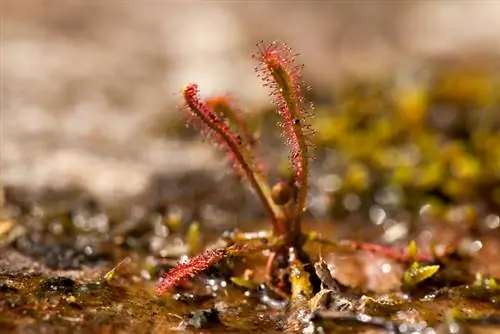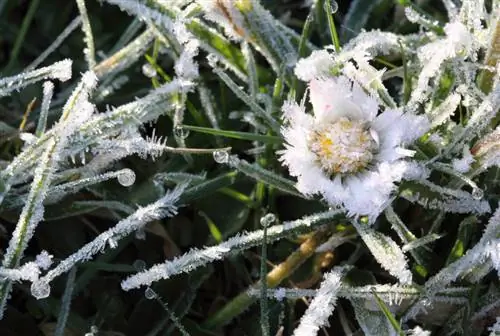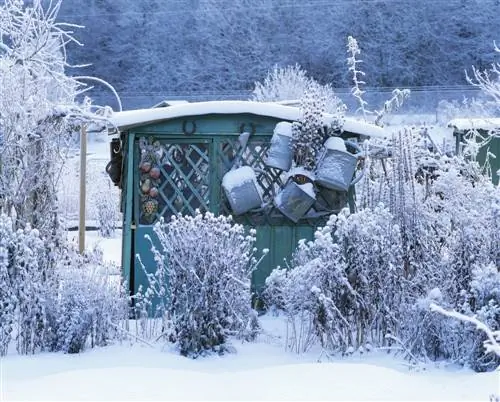- Author admin [email protected].
- Public 2023-12-16 16:46.
- Last modified 2025-01-23 11:20.
The family of carnivorous plants consists of a large number of species that come from very different regions. Carnivores native to Germany are mostly hardy. Other species grow in rainforests or tropical regions and cannot tolerate frost.

Which carnivorous plants are hardy?
In Germany, some types of carnivorous plants are hardy, including sundew, butterwort and pitcher plant. Even Venus flytraps can survive frost by re-sprouting in spring.
Hardy carnivorous plants
The hardy carnivorous plants include some species of the
- Sundews
- Fettkrauts
- the pitcher plant
Even Venus flytraps are said to be partially hardy. If they get frost, the above-ground parts die. However, the plant often sprouts again in spring. Some gardeners even overwinter them in the refrigerator. To do this, the plant roots are slightly shortened and wrapped in peat moss (€13.00 on Amazon). The catch flaps must also be cut off. In March the plants are planted in fresh substrate and acclimated to the fresh air again.
For all other types of carnivores, it is better to assume that they cannot tolerate freezing temperatures. If you are unsure whether the carnivorous plants you keep are hardy, seek professional advice.
Overwinter non-hardy carnivorous plants
There are hardly any general recommendations for overwintering carnivores. The species are so different that they require very different conditions in winter.
The vast majority of non-hardy species prefer a cooler location in winter. The temperatures should be between 10 and 16 degrees. They must not be exposed to frost.
These species are watered less in winter. Under no circumstances should you keep the plants on a windowsill above the radiator. Here the humidity is far too low and the carnivores do not survive the winter.
What does it mean to cultivate carnivorous plants?
Many experts do not bring their non-hardy carnivorous plants into their winter quarters. At best, they regulate the temperatures slightly and water the plants a little less often.
The cultivation of pitcher plants generally works quite well. However, for other species such as butterwort, dwarf pitcher or Venus flytrap, this form of hibernation is not advisable. They need cooler temperatures in winter.
Tip
Sundews and butterworts can be overwintered outdoors in a favorable location. A moor bed that is in a sheltered corner is suitable.






